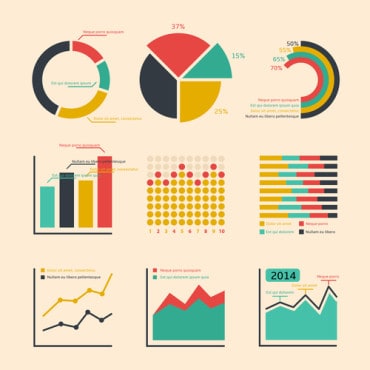
With predictive analytics and modern AI-powered capabilities, security teams can bolster defenses and ensure stronger protection against modern threats.
Organizations are faced with a new and much more sophisticated level of digital threats. Advances in AI, specifically generative AI, are enabling hackers to attack multiple enterprises at an accelerated speed. Fraudsters use generative AI to carry out synthetic identity fraud and digital injection attacks, for example, and can quickly escape with large sums of money before they are ever caught.
To combat increasingly sophisticated cyberattacks, security leaders are deploying AI-powered analytics solutions, leveraging the power of data and intelligent insights to stop attackers in their tracks and even predict their next move. Let’s explore the growing landscape of AI-backed cyberattacks and dive deeper into how AI-powered predictive analytics help businesses stay ahead of the curve.
Emerging AI-Powered Threats
New cyberattack techniques, including deepfakes, digital injection attacks, phishing, and other scams, are becoming increasingly complex – making it easier than ever to perpetuate fraud at scale. These threats place businesses in danger of significant consequences, including financial losses and trust and reputational damage. For example, the dark web has introduced novel threats like FraudGPT, an LLM trained not for creativity but for fraud. By circumventing ChatGPT’s limitations, FraudGPT weaponizes vast data for scams, posing a critical risk to organizations and their users. Other advancing attack methods leveraging data and automated intelligence include:
- Social engineering: This technique is not an intricate zero-day attack or a cryptic script. Rather, it’s manipulation, and it’s alarmingly effective — in 2023, a staggering 74% of cyberattacks leveraged the human element, costing businesses millions of dollars on average. As cyberattacks increasingly take aim at employees, security leaders’ defense playbooks must account for these sophisticated attacks.
- Synthetic identity fraud: This attack method has consistently posed a challenge for various industries, especially finance, and the issue is being accelerated by AI. This growing form of identity theft involves blending real and fictitious information to craft deceptive personas. Criminals cleverly piece together a false name, an actual date of birth, and a stolen Social Security number or other fraudulent details, complicating the detection process. The data used for this purpose may originate from AI-generated sources, data breaches, or purchases from the dark web. Cybercriminals, armed with the necessary information, then assemble synthetic identities that include fabricated names and addresses.
- Deepfakes: Another emerging tactic in the realm of deception includes the rise of deepfakes. This involves employing advanced technology to generate artificial videos or images that closely resemble reality, often utilizing faces generated by AI or real human faces. Deepfake variations, such as voice cloning, have also entered the corporate world. Recently, cybercriminals leveraged the voices of executives to create AI-generated calls and execute larger corporate scams.
- Digital injection attacks: These attacks generate fake biometric samples, such as synthetic fingerprints or AI-created facial images. Unlike conventional approaches that rely on physical objects like printed photos or silicone masks, this method uses emulators, hacking tools, or virtual cameras to infuse images directly into the video stream. With the escalation of these attacks, security leaders must fortify their defenses to safeguard users from fraudulent activities.
See also: Considerations and a Blueprint for Responsible AI Practices after a Year of ChatGPT
Decoding Deception to Prevent & Predict Attacks
As the digital world keeps evolving, new and increasingly sophisticated threats continue to arise. With this in mind, it’s crucial to have in place the proper tools that can mitigate current issues and adapt to handle new risks. This is where AI-driven predictive analytics comes in.
This fresh approach extends past the usual user ID checks and biometric methods like face and fingerprint scanning and scrutinizes the details of individual identity transactions across an extensive network. This allows for a thorough grasp of the attack landscape, surpassing superficial evaluations and swiftly and accurately identifying intricate fraudulent connections.
Unlike conventional approaches restricted to reviewing past incidents, AI-generated insights can prevent fraud before it happens. These tools can automatically detect and neutralize threats.
Fortifying Defenses with AI & Data
The foundation of effective fraud analytics lies in data and a substantial dataset is needed to pinpoint fraud patterns accurately. A broad data reservoir powers machine learning and AI, facilitating ongoing evolution and enhanced insights. With adept automation, these systems are ready to protect against the ever-changing terrain of fraud threats, providing a strong defense against potential risks.
These systems unlock significant advantages for organizations, including fraud risk scoring. This entails categorizing identity transactions by risk and using graph database technology and AI to delve beyond basic connections and construct a more detailed image. With this technology, every transaction and its data can be examined throughout an entire network. Ultimately, quality checks and AI analyzing interconnected data can help security teams understand how transactions link to specific groups and the broader network. This enables the detection of extensive fraud networks and forecasting patterns before they materialize.
Maximizing Visibility to Minimize Risks
The days of accepting AI fraud detection as a black box are over. Consumers, regulators, and lawmakers demand transparency into how these algorithms impact lives and finances. Explainability is no longer a nice to have; it’s critical for trust and effectiveness.
As U.S. businesses currently lose 5% of their gross revenues to fraud, implementing cutting-edge, transparent, data-centric tools is critical to tackling existing threats and anticipating future ones. With modern AI-powered capabilities, security teams will bolster defenses and ensure stronger protection for the enterprise and the user.




























